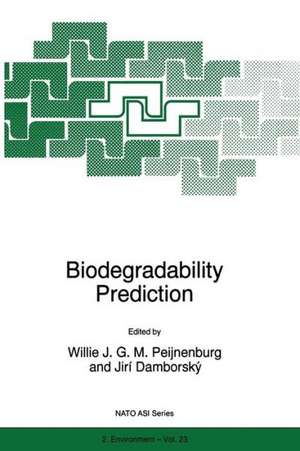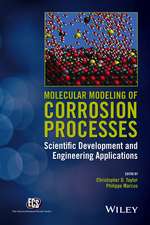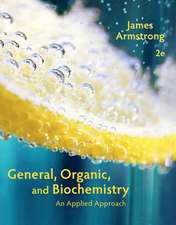Biodegradability Prediction: NATO Science Partnership Subseries: 2, cartea 23
Editat de W.J. Peijnenburg, Jirí Damborskýen Limba Engleză Paperback – 13 oct 2012
The present book deals with quantitative structure-biodegradability relationship models (QSBRs), emphasizing the biological and ecological part of the biodegradation process. Surveys are given of the microbial aspects of biodegradation and the methods available for testing biodegradability. New trends and methods in biodegradation modelling are reviewed, including contributions on computerized biodegradability prediction systems. Some of the newly developed models for assessing risk and ecological impact in aquatic and terrestrial environments have been validated, and this process is discussed.
Audience: Scientists active in microbiology, the environmental sciences, biotechnology and bioremediation. Policy makers will find the book indispensable in assessing the present state of the art on the biodegradability of substances.
Din seria NATO Science Partnership Subseries: 2
- 15%
 Preț: 638.43 lei
Preț: 638.43 lei - 5%
 Preț: 1420.29 lei
Preț: 1420.29 lei -
 Preț: 390.84 lei
Preț: 390.84 lei - 18%
 Preț: 949.90 lei
Preț: 949.90 lei -
 Preț: 401.24 lei
Preț: 401.24 lei - 15%
 Preț: 653.14 lei
Preț: 653.14 lei - 5%
 Preț: 1414.64 lei
Preț: 1414.64 lei - 15%
 Preț: 642.18 lei
Preț: 642.18 lei - 18%
 Preț: 1846.40 lei
Preț: 1846.40 lei - 18%
 Preț: 949.90 lei
Preț: 949.90 lei - 15%
 Preț: 643.84 lei
Preț: 643.84 lei - 18%
 Preț: 1839.63 lei
Preț: 1839.63 lei -
 Preț: 416.64 lei
Preț: 416.64 lei - 18%
 Preț: 1234.77 lei
Preț: 1234.77 lei - 18%
 Preț: 1834.90 lei
Preț: 1834.90 lei - 18%
 Preț: 950.96 lei
Preț: 950.96 lei - 15%
 Preț: 655.78 lei
Preț: 655.78 lei -
 Preț: 403.53 lei
Preț: 403.53 lei -
 Preț: 381.98 lei
Preț: 381.98 lei - 18%
 Preț: 1836.94 lei
Preț: 1836.94 lei - 15%
 Preț: 645.47 lei
Preț: 645.47 lei - 18%
 Preț: 946.87 lei
Preț: 946.87 lei - 18%
 Preț: 1227.99 lei
Preț: 1227.99 lei - 18%
 Preț: 1232.57 lei
Preț: 1232.57 lei -
 Preț: 398.15 lei
Preț: 398.15 lei - 18%
 Preț: 1232.71 lei
Preț: 1232.71 lei - 18%
 Preț: 1223.88 lei
Preț: 1223.88 lei - 18%
 Preț: 1228.77 lei
Preț: 1228.77 lei
Preț: 380.07 lei
Nou
Puncte Express: 570
Preț estimativ în valută:
72.73€ • 78.98$ • 61.10£
72.73€ • 78.98$ • 61.10£
Carte tipărită la comandă
Livrare economică 22 aprilie-06 mai
Preluare comenzi: 021 569.72.76
Specificații
ISBN-13: 9789401063982
ISBN-10: 9401063982
Pagini: 156
Ilustrații: IX, 143 p.
Dimensiuni: 160 x 240 x 8 mm
Greutate: 0.23 kg
Ediția:1996
Editura: SPRINGER NETHERLANDS
Colecția Springer
Seria NATO Science Partnership Subseries: 2
Locul publicării:Dordrecht, Netherlands
ISBN-10: 9401063982
Pagini: 156
Ilustrații: IX, 143 p.
Dimensiuni: 160 x 240 x 8 mm
Greutate: 0.23 kg
Ediția:1996
Editura: SPRINGER NETHERLANDS
Colecția Springer
Seria NATO Science Partnership Subseries: 2
Locul publicării:Dordrecht, Netherlands
Public țintă
ResearchCuprins
Introduction, Main Conclusions and Recommendations of the Workshop “QSAR Biodegradation II”.- I. Biodegradability (foundations, testing).- Biodegradability of Xenobiotic Organic Compounds Depends on their Chemical Structure and Efficiently Controlled, and Productive Biochemical Reaction Mechanisms.- Biodegradability Testing of Xenobiotics.- II. Biodegradability Modelling (trends, methods).- The META-CASETOX System for the Prediction of the Toxic Hazard of Chemicals Deposited in the Environment.- Application of Artificial Intelligence in Biodegradation Modelling.- Polychlorinated Dibenzo-p-Dioxins in Anaerobic Soils and Sediments. A Quest for Dechlorination Pattern-Microbial Community Relationships.- A Biodegradability Evaluation and Simulation System (BESS) Based on Knowledge of Biodegradation Pathways.- A Mechanistic Approach to Deriving Quantitative Structure Biodegradability Relationships. A Case Study: Dehalogenation of Haloaliphatic Compounds.- III. Biodegradability Prediction (applications).- Quantitative Structure-Biodegradability Studies: An Investigation of the MITI Aromatic Compound Data-Base.- Prediction of Biodegradability from Chemical Structure: Use of MITI Data, Structural Fragments and Multivariate Analysis for the Estimation of Ready and Not Ready Biodegradability.- Development of Structure-Biodegradability Relationships (SBRs) for Estimating Half-Lifes of Organic Contaminants in Soil Systems.- Author Index.




